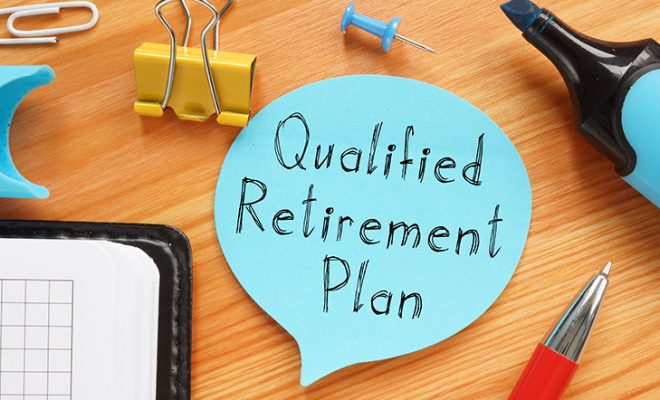Retirement Planning Checklist

Retirement is one of the few life milestones you can’t afford to approach unprepared. It requires building a structure that can sustain your lifestyle, protect against risks, and give you freedom in the years ahead.
For mid-level professionals in America, this stage often arrives with both confidence and uncertainty. You’ve built a career, accumulated assets, and perhaps even mapped out vague retirement goals. Yet the questions that matter most remain: What will it actually cost to live the way I imagine? How do I align my income sources with those costs? What blind spots could derail decades of work?
That’s where a retirement planning guide checklist becomes indispensable. Instead of scattered advice, it provides a disciplined framework. It helps you identify overlooked expenses, test your assumptions about Social Security and healthcare, and align financial decisions with lifestyle choices. More importantly, it shows how all the moving parts (investments, expenses, timing, and even estate plans) interlock to create security.
This article brings those pieces together. It takes you past the surface-level tips and into the deeper work: clarifying priorities, building a realistic retirement expenses checklist, coordinating plans if you are a couple, and stress-testing strategies against real-world risks.
What does the “preparing to retire checklist” need to include
Before diving into line items, understand that a preparing to retire checklist needs both quantitative and qualitative elements. You’ll want to know:
- What income do you have, exactly, not just a rough estimate?
- What expenses do you face, including those that change or appear only in retirement?
- What lifestyle and location changes would you like, and what would be the associated costs?
- What risks might you encounter (health, market, inflation) and how to buffer for them?
With those in mind, below is the full checklist broken into phases.
Retirement planning checklist: Phase by phase
| Time Frame | Key Tasks |
| 10+ years before retirement | • Define your ideal retirement lifestyle: if you wish to travel, have hobbies, etc. Clarify non-negotiables vs nice-to-haves.
• Estimate your life expectancy (realistically beyond 85) to plan for a long retirement. • Maximize savings: contribute to 401(k), 403(b), IRAs; make catch-up contributions once past 50. • Diversify your investments; assess how much risk you can tolerate long term. • Review insurance: life, disability, long-term care insurance; understand premiums now vs later. • Start estate planning: wills, trusts, power of attorney; check beneficiary designations. |
| 5 to 10 years before | • Build a detailed retirement expenses checklist, including routine and non-routine costs.
• Project healthcare/medical and long-term care expenses. • Evaluate housing: whether to downsize, relocate, or adapt current home. • Review your sources of income, including Social Security, pension, and investments, and estimate how much each will provide. • Adjust your investment mix to reduce exposure to major volatility but keep enough growth to beat inflation. • Begin thinking through withdrawal strategies from various accounts; understand RMDs. |
| Less than 5 years before | • Select a target retirement date.
• Decide when to begin Social Security (e.g., at 62, full retirement age, or later). • Confirm coverage for Medicare or equivalent; investigate supplemental plans or Medigap. • Make home repairs, vehicle replacements, or large purchases before retiring. • Test budgets vs real costs. Do a trial run living on your projected retirement income for a few months to see where gaps appear. • Review estate documents, healthcare directives; solidify plans for beneficiary updates. |
| Right at retirement/First few years | • Implement withdrawal strategy; sequence withdrawals to minimize taxes.
• Monitor spending closely; adjust for surprises or unexpected costs. • Reevaluate risk in your investment portfolio. • Ensure health coverage properly switches over; manage Medicare premiums and out-of-pocket costs. • Review annual budget with inflation in mind; it may creep faster than expected. • Keep some flexibility built in for emergencies and unplanned life changes. |
Retirement expenses checklist: What you must account for
Your expense forecasts are the foundation of every other decision. Under-estimating costs is the single most significant cause of stress in early retirement. Here is what to include:
- Housing and living: Mortgage or rent (if you move); property taxes; homeowners or condo fees; maintenance and repairs; utilities; insurance; possibly cost increases if relocating or living in a more expensive area.
- Healthcare costs: Medicare premiums, deductibles, copays; supplemental insurance; dental, vision, and hearing care; long-term care; prescription drugs; health insurance before age 65 if retiring early.
- Insurance and risk: Life insurance; long-term care; liability; auto; homeowners; umbrella policies; disability (if applicable).
- Transportation: Car payments or leases; maintenance; insurance; fuel; public transport; replacing vehicles, registration fees, and licenses.
- Taxes: Federal income tax; state and local taxes; tax on retirement account withdrawals; property tax; sales tax on purchases, etc.
- Food, clothing, and daily living expenses: Groceries, dining out, clothing, household supplies, and personal care.
- Travel/leisure/hobbies: Vacations; hobbies with associated costs; travel insurance; membership fees; entertainment.
- Debt and obligations: Any remaining debts (mortgage, car loans, credit cards); planned gifts; support to family.
- Emergencies and miscellaneous expenses: Home repair, unexpected health costs, caregiving costs, inflation buffer, technology costs, and “surprise” expenses.
- Lifestyle changes: Relocation, downsizing, seasonal homes, adjusting for inflation, and changing spending habits as age advances.
Retirement planning checklist for couples
- One spouse may retire earlier than the other. That means healthcare, income, Social Security timing, and domicile changes will differ.
- Survivor benefits encompass arrangements for pensions, Social Security, and life insurance that take effect upon the first spouse’s passing. Make sure elections maximize survivor support.
- Joint budgeting involves agreeing on shared versus individual expenses (such as travel and hobbies). What one person views as a luxury, another might view differently.
- Tax filing status changes include switching from married filing jointly to married filing separately, relocating to a new state, and adjustments to property and income taxes.
- Estate planning encompasses joint wills or trusts, powers of attorney for both spouses, and arrangements for managing finances in the event of incapacity.
- Housing/downsizing decisions often need more planning because one spouse’s needs, preferences (closeness to family, accessibility), become important.
Key decisions you can’t ignore
These are the areas that most checklists mention, but too many retirees neglect, often at significant cost.
1. When to start Social Security
Claiming Social Security early at the age of 62 reduces the monthly benefit; delaying up to age 70 gives you more, but means you need other income sources in the meantime. For couples, this is more complex because spousal and survivor benefits matter.
2. Withdrawal strategy and Required Minimum Distributions (RMDs)
Deciding which accounts to pull from first (taxable vs tax-deferred vs Roth, etc.). Mistiming or misordering can result in tax penalties. Additionally, RMD ages have recently changed under U.S. law, so ensure you have the correct age for your birth year.
3. Portfolio risk adjustment and sequence of returns
If you have a market drop near or just after you retire, your nest egg can take a big hit. Adjust asset allocation gradually before retirement. Use buckets or glide paths to protect near-term income by allocating assets.
4. Healthcare and long-term care funding
Healthcare costs are among the primary risks in retirement. Many people retire before reaching Medicare eligibility; others underestimate the costs of long-term care. Having a plan (insurance or emergency reserves) is essential.
5. Inflation and cost escalations
Inflation erodes purchasing power. This is especially true for healthcare, housing, and insurance. You must budget while keeping inflation rates in mind to ensure you have enough.
Putting it all together: How to use the checklist
1. Write down your assumptions
How many years to retirement? What yearly income do you expect? What lifestyle? What state will you live in? What rate of inflation do you assume? What health status?
2. Build a model
Use Excel or online retirement calculators to project income vs expenses across decades. Test different scenarios (e.g., retire at age 62 vs 67, live in current home vs downsized, healthcare high vs low).
3. Stress-test the model
Introduce “what ifs”: stock market drop, health crisis, spouse death, big home repair, inflation spike. See if reserves or buffers cover these.
4. Track progress and adjust
Do an annual review without fail: Are savings on target? Has your investment performance drifted? Are your expenses changing? Has your target retirement date shifted?
5. Document everything
Keep financial statements, insurance policies, legal documents, healthcare directives, and beneficiary forms all up to date and in a place where both spouses or family members can access them.
Advanced triggers most retirees overlook
Retirement planning is all about anticipating the pitfalls that can quietly erode decades of savings and investments. Below are the critical factors that separate a retirement lived with confidence from one plagued by costly surprises:
- Claiming Social Security early can cost you in spousal/survivor benefits. For many couples, delaying claiming Social Security benefits of one spouse (or both) can increase not just that person’s benefit but also what the surviving spouse gets.
- Tax diversification matters. Having all savings in tax-deferred accounts (401(k), Traditional IRAs) may look great while working, but withdrawals will all be taxed, and potentially push you into higher tax brackets. A mix of Roth and taxable accounts can provide flexibility.
- Healthcare gaps before Medicare age are often underestimated. If you retire before 65, you’ll likely need private insurance; premium subsidies are limited; out-of-pocket costs can be steep; dental, vision, and hearing almost always cost you.
- Sequence risk: Losing money in early retirement years (just after you stop working) shocks your portfolio more than later losses. That means being more conservative with near-term funds.
- Behavioral cost of downsizing or relocating. Relocation may reduce taxes and maintenance, but consider hidden costs: new property taxes; different cost of living; emotional cost (losing familiarity, community).
To conclude: Build a sustainable retirement plan
Checking every box is essential, but what distinguishes a “good retirement” from a “comfortable, resilient retirement” is how well you manage life after the checklist is done. Here are additional, functional layers to build into your retirement planning:
- Monitor and iterate: Even in retirement, your situation will continue to evolve. Health, taxes, and policy changes (e.g., Social Security, Medicare) shift. Revisit your plan annually; don’t assume that once you retire, you can simply “set it and forget it.”
- Maintain optionality: Keep parts of your portfolio in growth allocations, keep skills sharpened in case you want part-time work or consulting, and stay open to relocating depending on family or cost-of-living changes. Option to scale back spending rather than cut dramatically.
- Lifestyle and meaning: Finances matter, but purpose gives structure. Many retirees underestimate the extent to which their identity is tied to work. Plan now for your daily routines, social engagement, volunteer work, or part-time work that you enjoy.
- Tax law and policy risk: Monitor legislative shifts closely. Tax brackets, RMD ages, and Social Security rules are subject to change. Ensure you are positioned to adapt.
- Legacy and impact: Think beyond money: what do you want your financial legacy to be? What values do you want to pass on? Charitable giving, inheritance structure, and even how you want to be remembered can influence how you set up your estate planning, trusts, and other arrangements.
A retirement planning checklist delivers if you apply it to your personal numbers, risk tolerance, and life goals. For many people, engaging a financial advisor can make the difference: someone who’ll hold you accountable, refine your questions about Social Security, withdrawal strategy, tax issues, and help you stress-test scenarios you haven’t considered.
Use the free advisor match tool to get matched with 2 to 3 seasoned financial advisors who can guide you through creating a retirement planning checklist that covers your needs.










